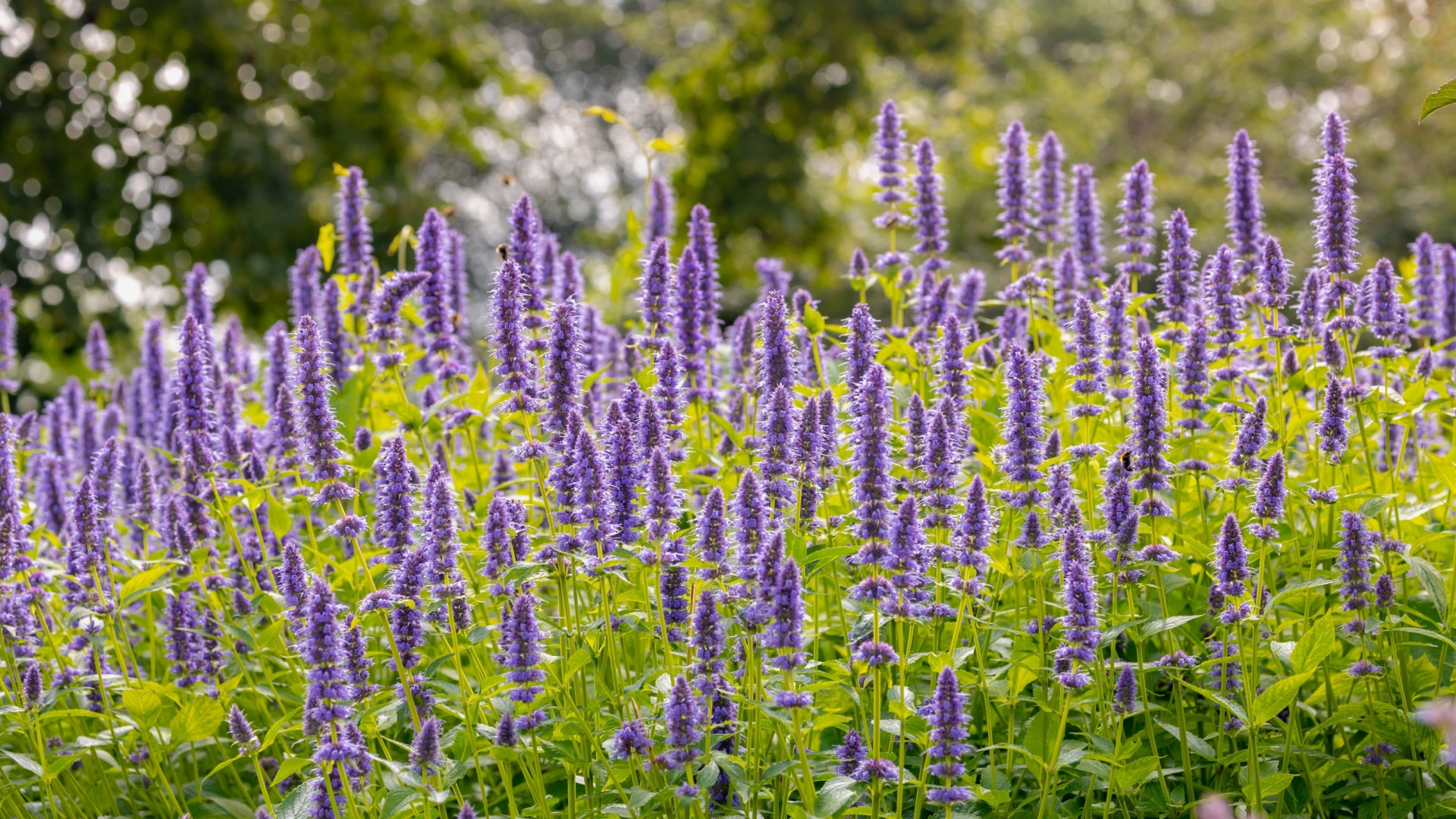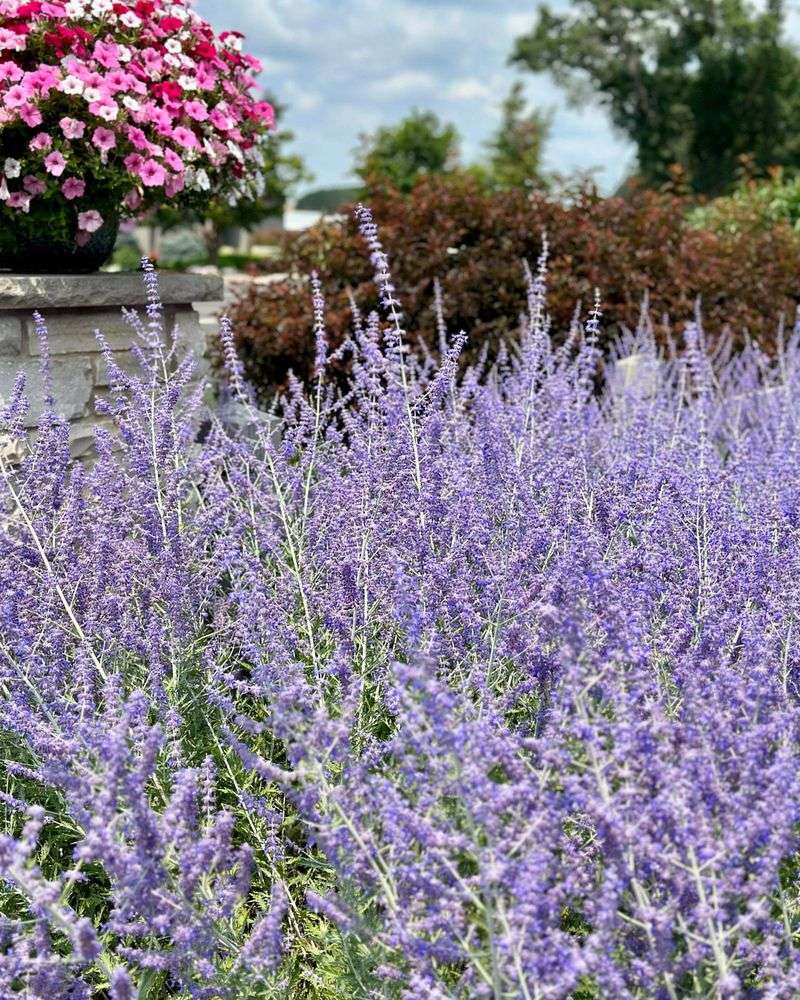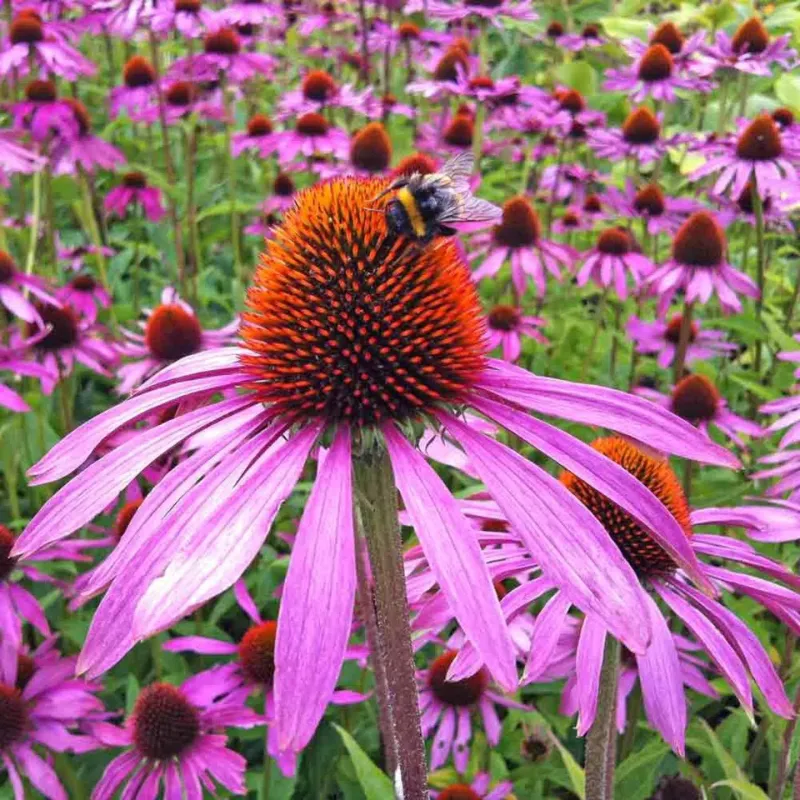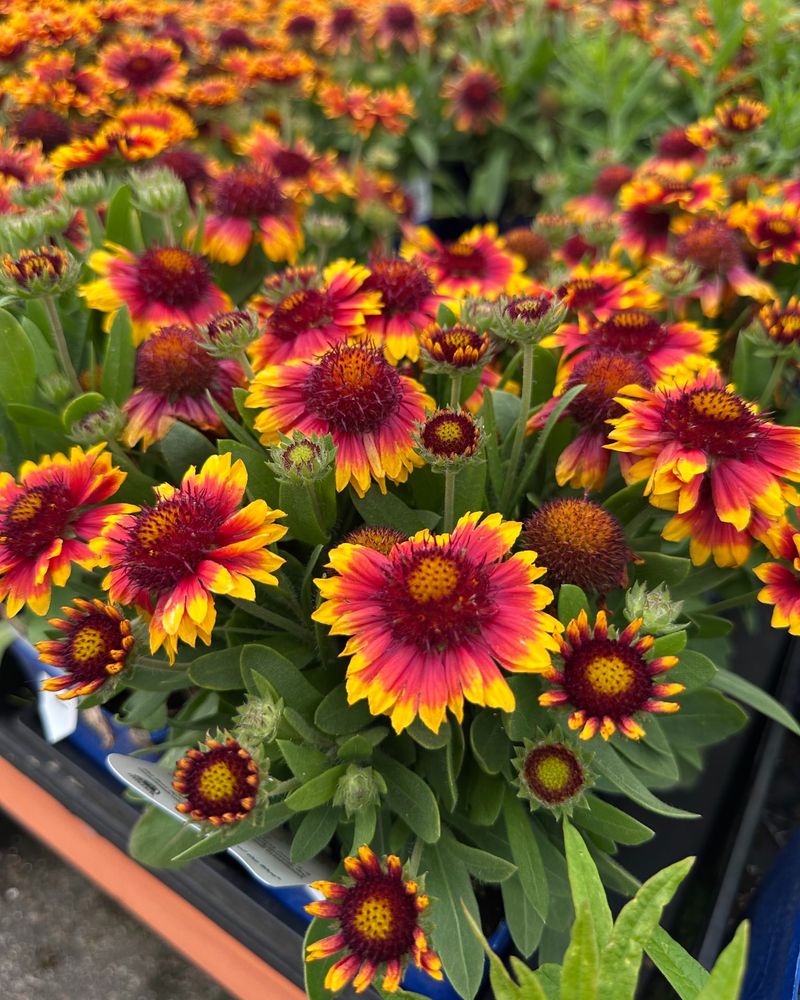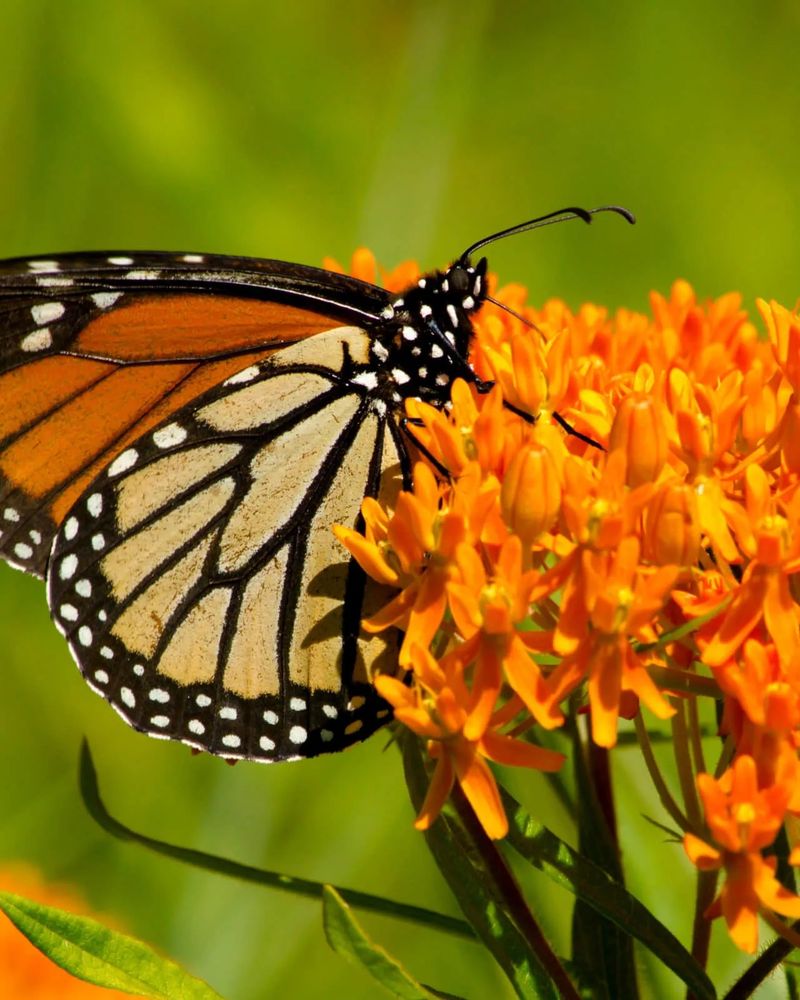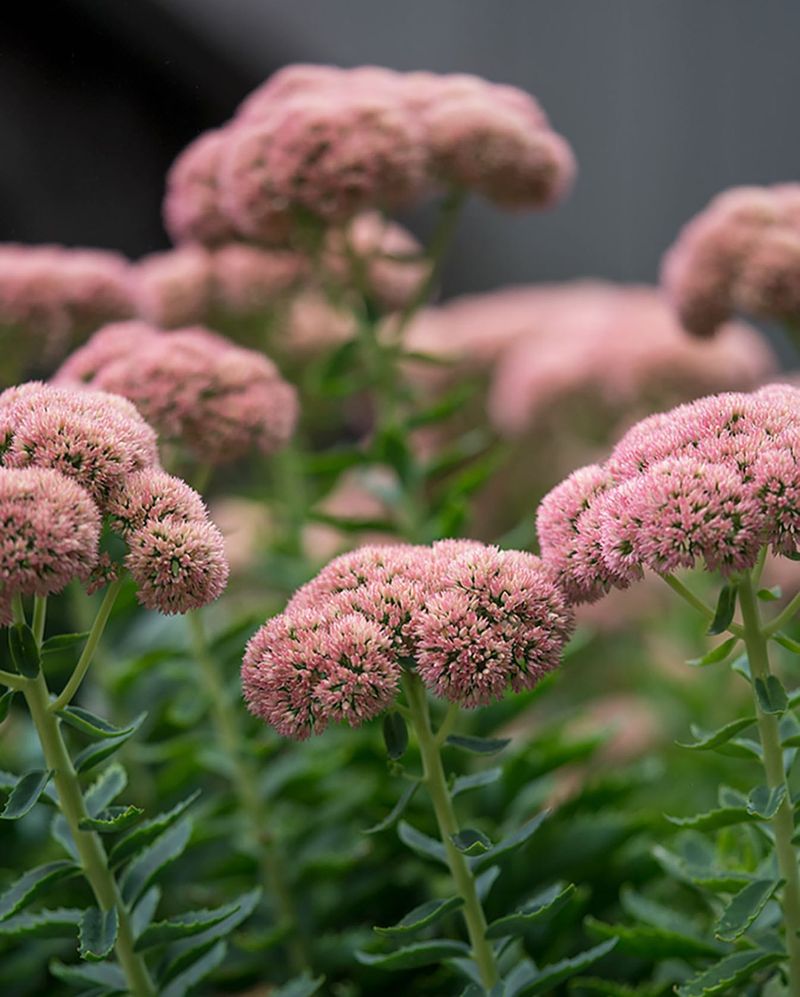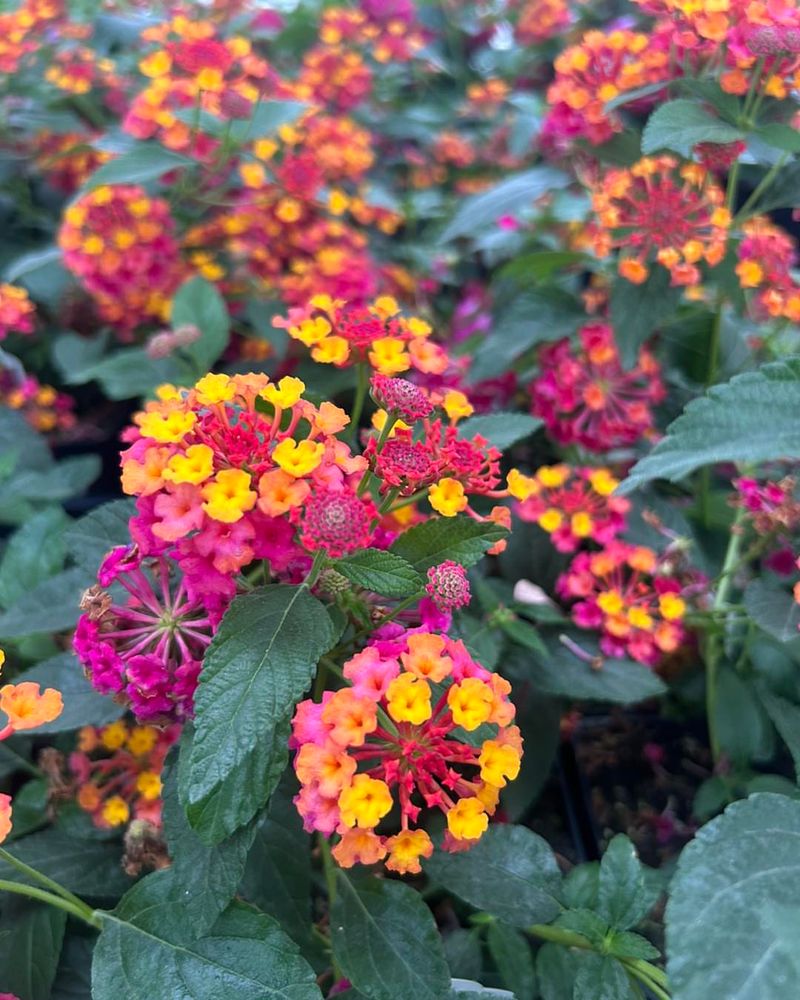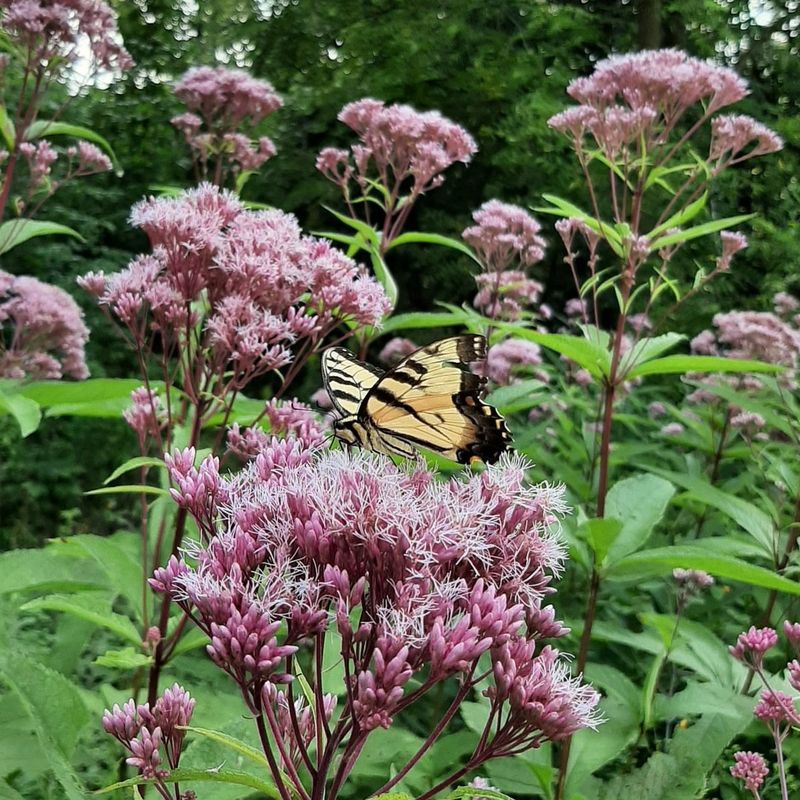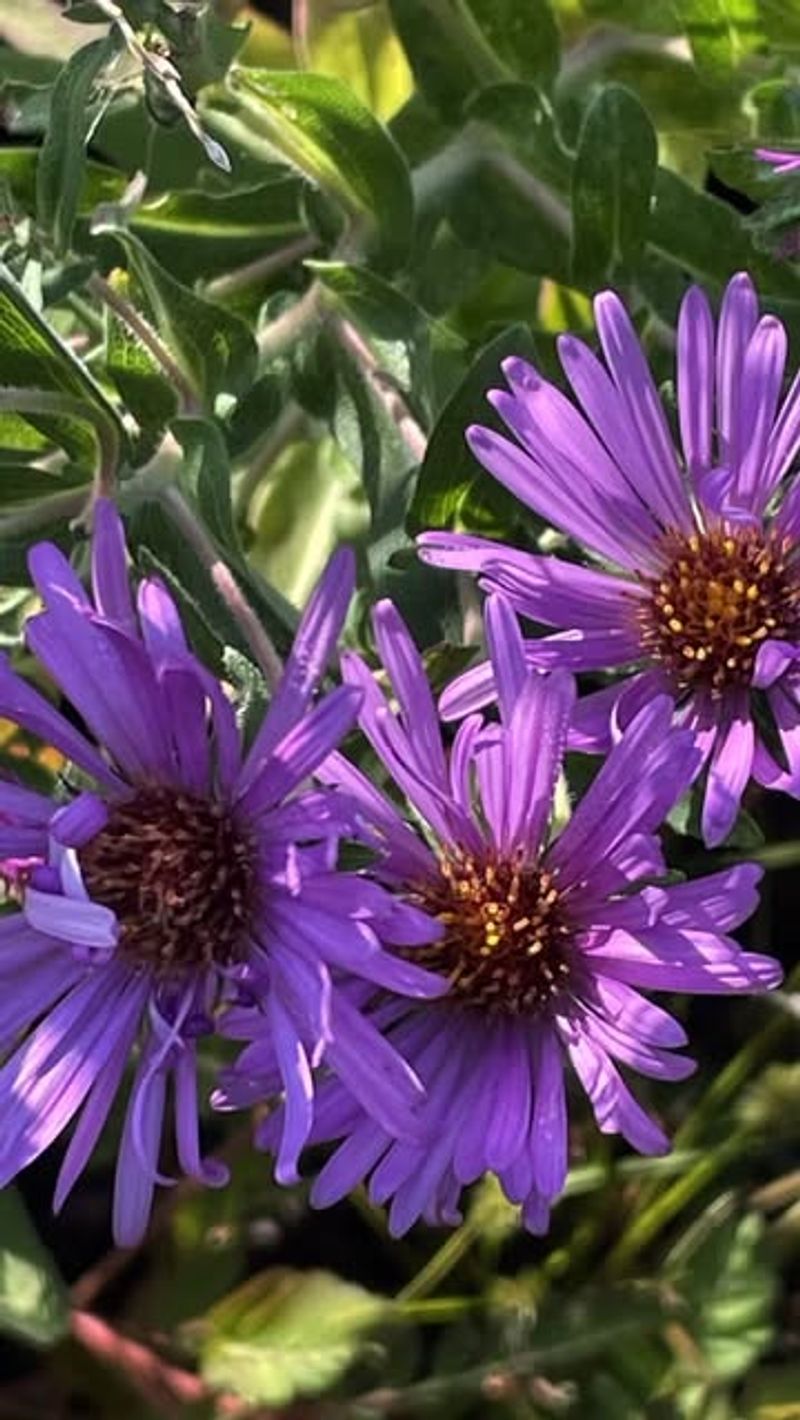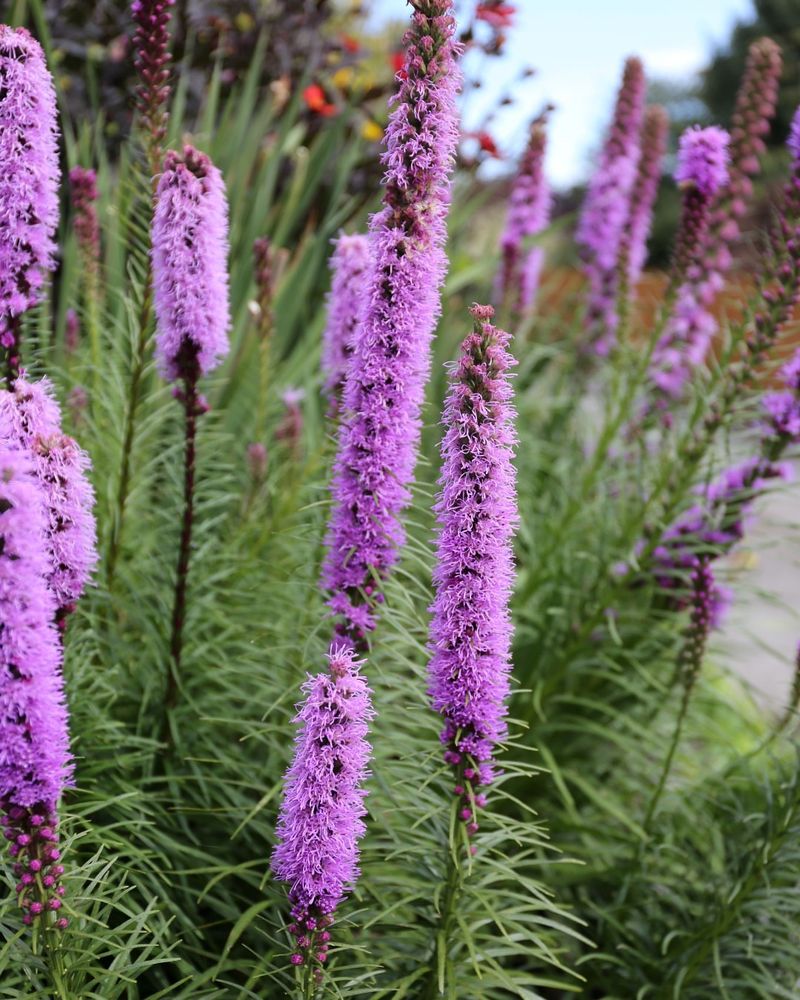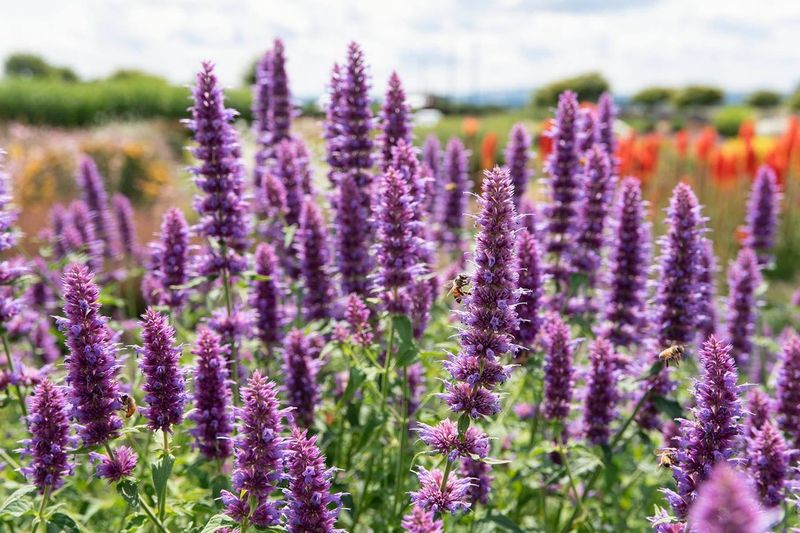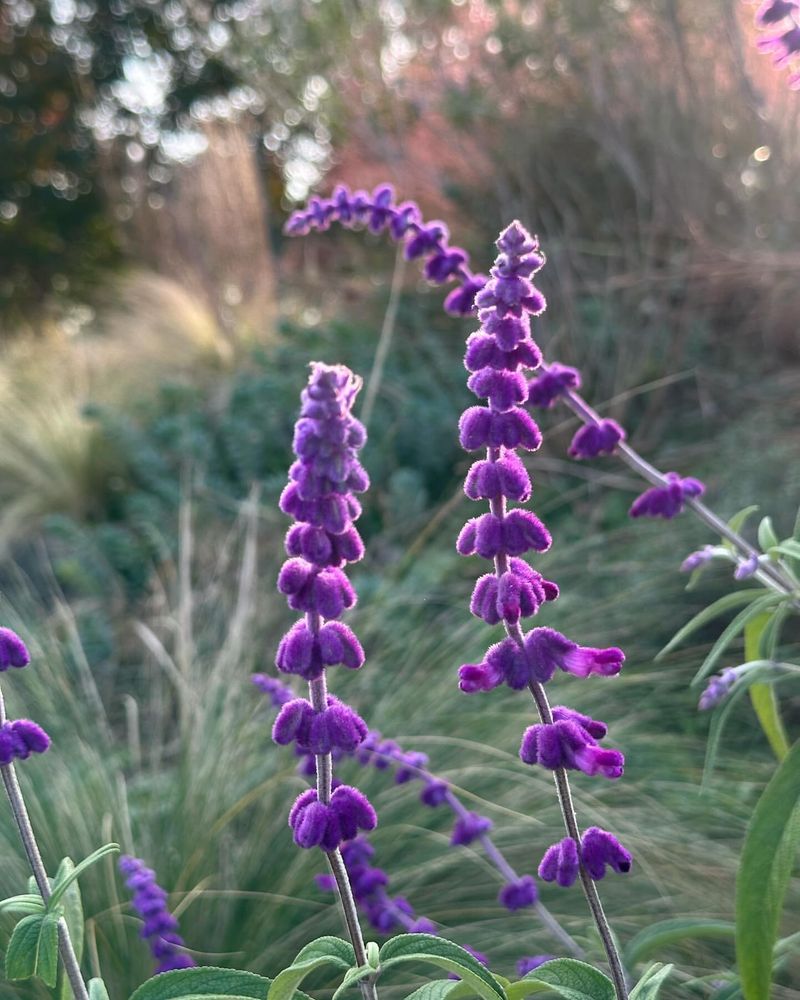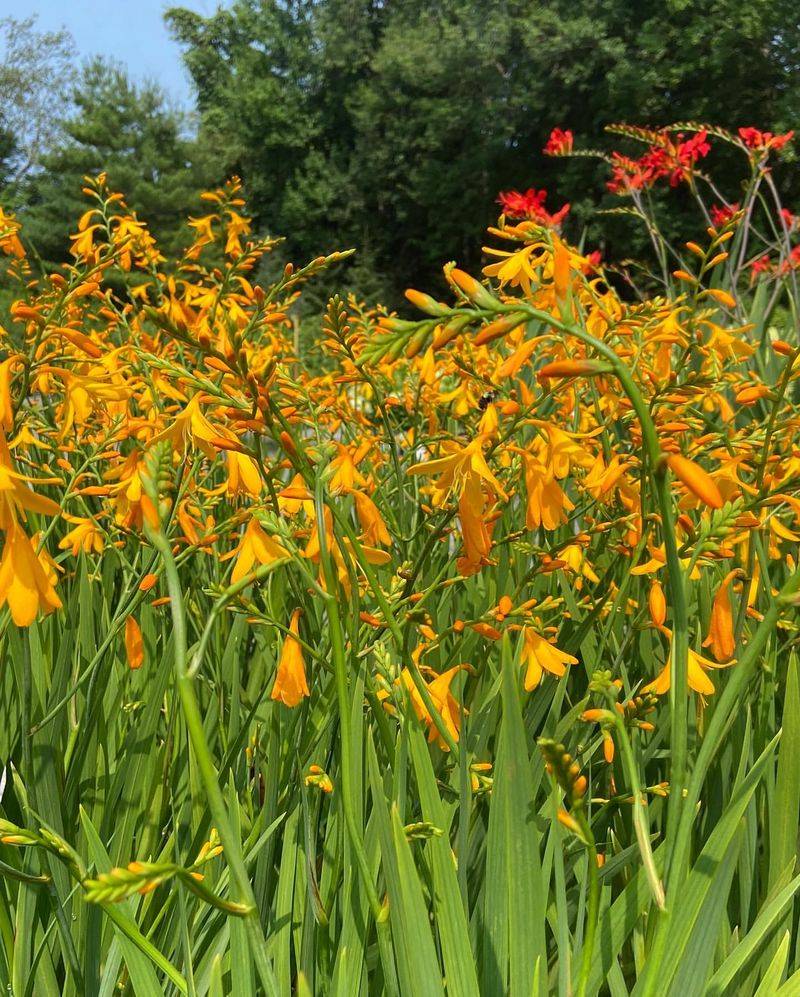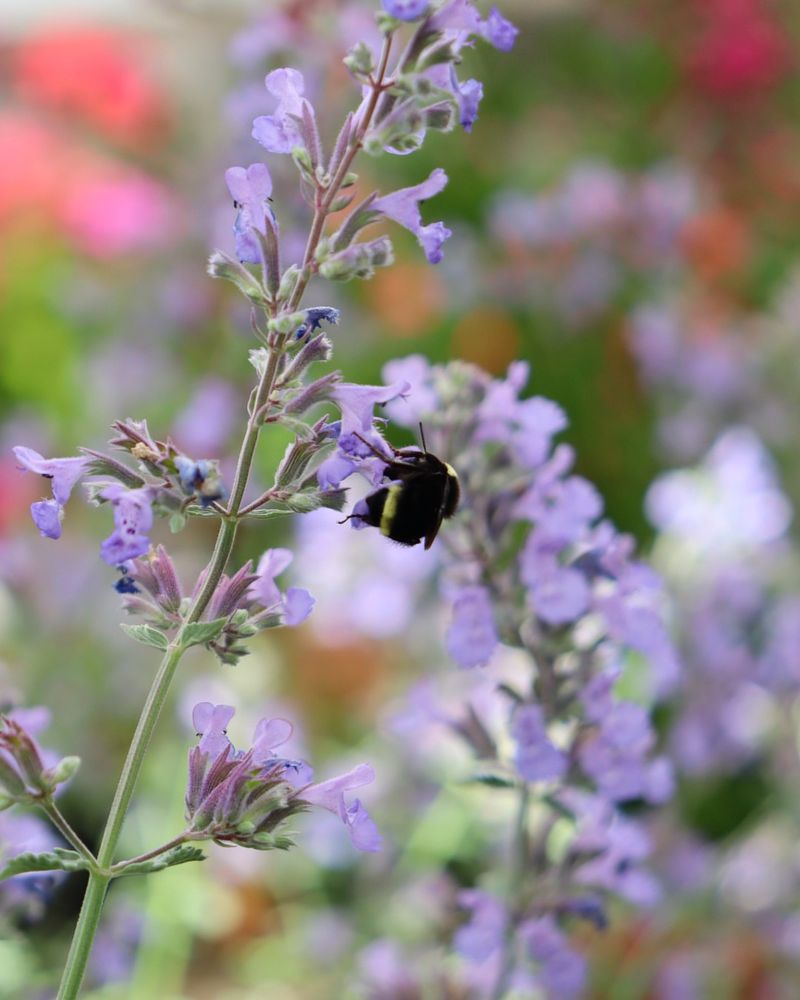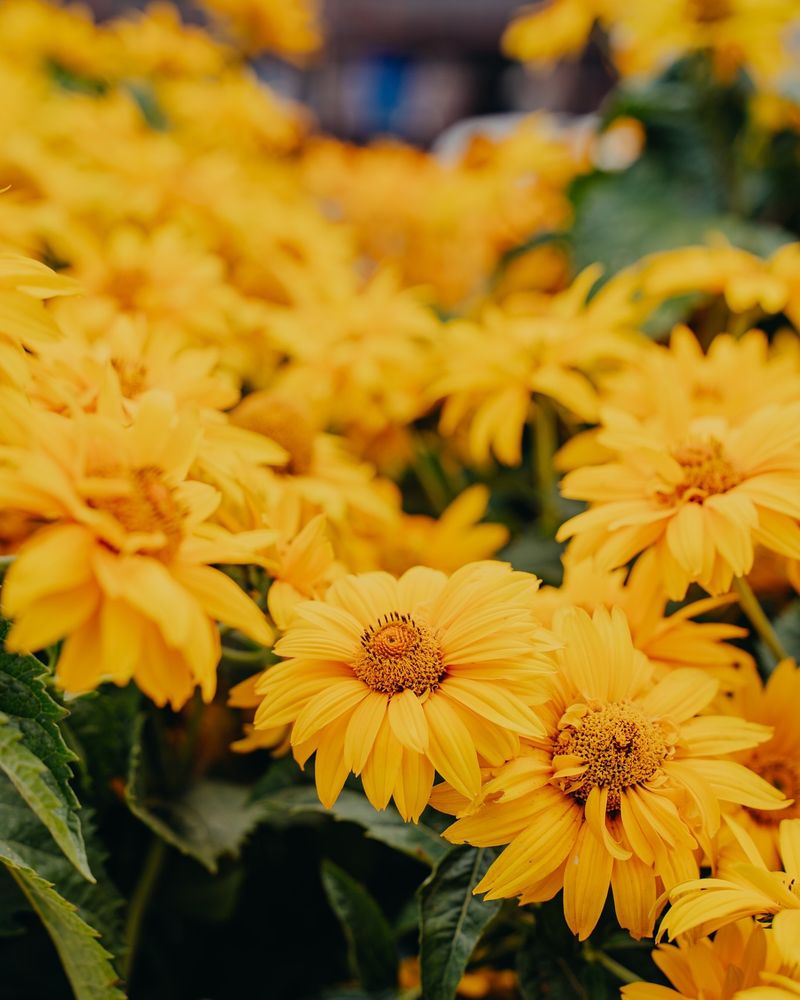Just when your garden starts to fizzle, these late-summer perennials kick into high gear. In North Carolina’s heat, they don’t just survive—they shine. These tough bloomers bring fresh color, bold texture, and nonstop energy when the rest of the yard looks tired.
If you want a garden that stays vibrant through the dog days, these plants are your go-to performers.
1. Black-Eyed Susan (Rudbeckia)
Bright golden petals surrounding dark centers make these flowers stand out in any garden. They bloom prolifically from July through October, creating a sea of sunshine even during the hottest days.
Black-Eyed Susans attract butterflies and beneficial insects while being deer-resistant. Their drought tolerance makes them perfect for sunny North Carolina gardens with minimal watering needs.
2. Russian Sage (Perovskia atriplicifolia)
Airy spires of lavender-blue flowers rise above silvery foliage, creating a dreamy, cloud-like effect in the garden. The aromatic leaves release a pleasant scent when brushed against, adding sensory appeal to your outdoor space.
Once established, Russian Sage needs almost no care. Its drought resistance and preference for poor soil make it ideal for challenging spots where other plants struggle.
3. Coneflower (Echinacea)
Native to North America, these daisy-like flowers with raised centers come in purple, pink, white, and even yellow varieties. Pollinators absolutely adore them, making your garden buzz with activity throughout late summer. Beyond their beauty, coneflowers have medicinal properties.
Their roots and flowers have been used for centuries to boost immunity. Plant them in well-draining soil and watch them thrive year after year.
4. Blanket Flower (Gaillardia)
Fiery red and yellow blooms resembling tiny sunbursts make Blanket Flowers a showstopper. Named after their tendency to spread like a colorful blanket across the landscape, these cheerful natives bring southwestern flair to Carolina gardens.
Few perennials match their heat tolerance and continuous blooming habit. They’ll flower from early summer until frost with minimal care, thriving in poor soil where many plants would fail.
5. Butterfly Weed (Asclepias tuberosa)
Clusters of vibrant orange flowers crown this native milkweed, creating a beacon for monarchs and other butterflies. Despite its name, Butterfly Weed is not invasive but rather a well-behaved perennial reaching about 2-3 feet tall.
Its deep taproot makes it incredibly drought-resistant once established. Plant it in full sun with well-draining soil and enjoy the butterfly parade all summer long while knowing you’re supporting important pollinator populations.
6. Sedum ‘Autumn Joy’
Succulent star-shaped foliage forms the perfect foundation for broccoli-like flower clusters that change from pale pink to deep russet as summer progresses. The architectural quality of Sedum adds structure to garden borders even before blooming.
Bees and butterflies flock to the nectar-rich flowers in late summer. Its water-storing leaves make it virtually indestructible during drought, while its upright habit prevents flopping even after heavy rain.
7. Lantana
Multicolored flower clusters resembling tiny bouquets cover these woody perennials from summer until frost. Colors range from vibrant orange and yellow combinations to soft pink and lavender blends, often with different hues appearing in the same cluster.
Lantana thrives in heat that would wilt lesser plants. Its slightly citrusy fragrance repels deer while attracting scores of butterflies. In milder parts of North Carolina, it may return year after year with minimal protection.
8. Yarrow (Achillea millefolium)
Flat-topped flower clusters rise above delicate, fern-like foliage, creating an airy presence in the garden. Modern yarrow varieties come in sophisticated shades of yellow, pink, red, and cream that blend beautifully with other perennials.
Ancient herbalists prized yarrow for wound healing—its genus name honors Achilles, who reportedly used it to treat soldiers. Today’s gardeners value its extreme drought tolerance and ability to thrive in poor soil where little else grows.
9. Joe-Pye Weed (Eutrochium purpureum)
Towering up to 7 feet tall, this native perennial creates a dramatic backdrop with its mauve-pink flower domes and whorled leaves. Butterflies can’t resist the nectar-rich blooms that appear just when the garden needs a late-summer boost.
Despite its common name, Joe-Pye isn’t a weed but rather a beneficial native named after a Native American healer. Plant it where you can enjoy watching swallowtail butterflies dance around its flowers during August’s heat.
10. Aster
Daisy-like flowers in shades of purple, blue, pink and white create a constellation of color in the late summer garden. Native aster varieties have evolved to handle North Carolina’s climate perfectly, blooming just when the garden needs reinvigoration.
Pollinators depend on asters as crucial late-season nectar sources. Their ability to bloom abundantly in less-than-perfect conditions makes them valuable additions to any garden, bringing reliable color when many plants have finished flowering.
11. Gaura (Gaura lindheimeri)
Dancing white or pink butterfly-like blooms float above slender stems, creating movement and lightness in the garden. The flowers open progressively along the stems, ensuring months of continuous display from early summer through fall.
Gaura’s deep taproot makes it remarkably drought-resistant. Originally from the southern plains, it laughs at North Carolina’s summer heat while adding a touch of grace to perennial borders. Its airy nature makes it perfect for weaving between more substantial plants.
12. Liatris (Blazing Star)
Purple flower spikes that bloom from top to bottom (unlike most plants) create vertical interest in the garden. Native to American prairies, Liatris stands strong through summer storms and drought while attracting scores of butterflies.
The unusual blooming pattern—starting at the top and working downward—extends the flowering period. Plant these eye-catching spires in groups for maximum impact, or scatter them throughout your garden to create purple exclamation points among other perennials.
13. Agastache (Hyssop)
Spikes of tubular flowers in jewel tones of purple, pink, and orange top aromatic foliage that smells faintly of licorice or mint. Hummingbirds zoom to these nectar-rich blooms while the scented leaves naturally repel garden pests.
Few perennials match Agastache’s combination of drought tolerance and continuous blooming. Its upright habit adds architectural interest to borders, while its ability to thrive in poor soil makes it perfect for challenging garden spots.
14. Salvia (Sage)
Spires of purple, blue, or white flowers rise above aromatic foliage, creating months of color with minimal care. Perennial salvias differ from their annual cousins by returning reliably year after year, often becoming more vigorous with age.
Deer and rabbits avoid the strongly scented foliage, while butterflies and hummingbirds can’t resist the nectar-rich blooms. A quick trim after the first flush of flowers encourages a second round of blooming that continues until frost.
15. Crocosmia
Sword-like foliage sets the stage for arching stems of trumpet-shaped flowers in fiery red, orange, or yellow. The exotic-looking blooms appear in mid to late summer, adding tropical flair to North Carolina gardens when many plants are past their prime.
Hummingbirds find the tubular flowers irresistible. After blooming, interesting seed pods extend the ornamental season. Plant the corms in spring and enjoy their dramatic presence for years to come with minimal care.
16. Catmint (Nepeta)
Clouds of lavender-blue flowers hover above aromatic gray-green foliage, creating a soft, billowing effect in the garden. Unlike its cousin catnip, improved catmint varieties maintain a tidy habit without excessive spreading or flopping.
The fragrant leaves deter deer and rabbits while attracting beneficial insects. A quick shearing after the first bloom produces a second flush of flowers. Its drought tolerance makes it perfect for hot, sunny spots where other perennials might struggle.
17. Heliopsis (False Sunflower)
Golden daisy-like flowers perch atop sturdy stems from early summer through fall, creating months of cheerful color. Unlike true sunflowers, Heliopsis returns reliably year after year, forming substantial clumps that need dividing only every few years.
The long-lasting blooms make excellent cut flowers. Native to eastern North America, these hardy plants shrug off heat, humidity, and drought that would challenge lesser perennials. Their upright habit requires no staking even after summer storms.

